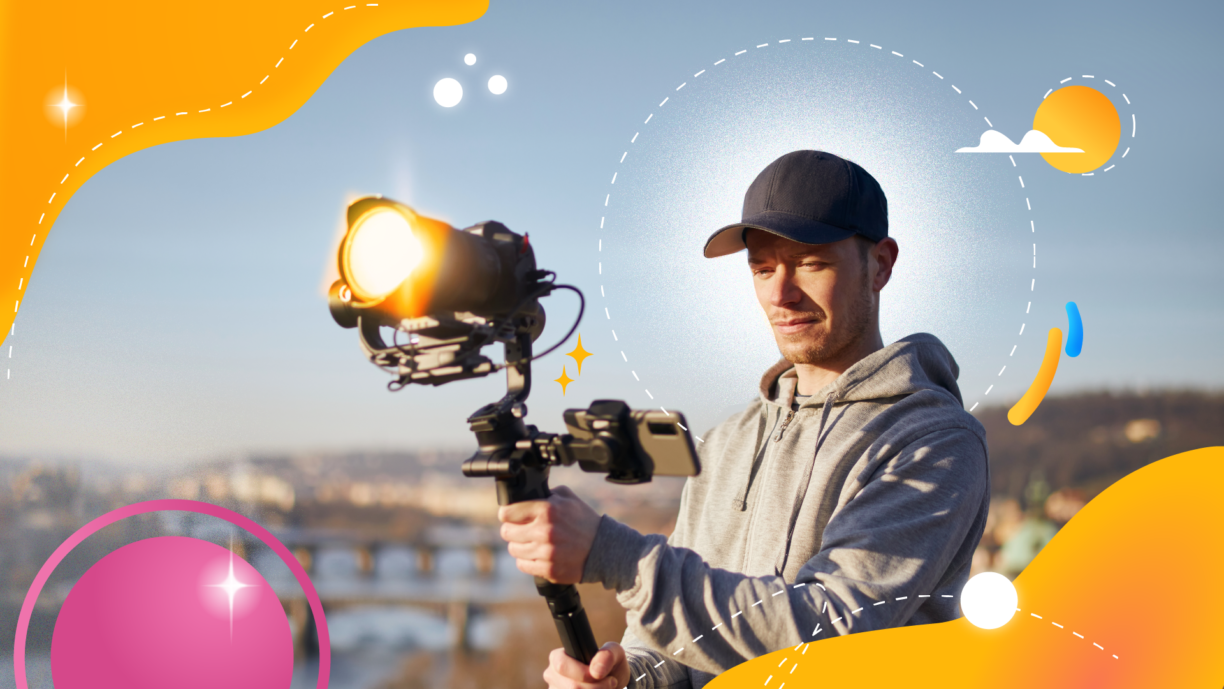What is the Art of Documentary Filmmaking?
The art of documentary filmmaking is an immersive storytelling technique that allows filmmakers to capture real stories and events on camera. Unlike other forms of filmmaking, documentaries focus on real people, places, and events, and the stories that emerge from them.
Documentary filmmakers aim to capture the essence of a story by using a range of filmmaking techniques, such as interviews, voiceovers, archival footage, and reenactments.
Documentaries have become increasingly popular in recent years, thanks to the emergence of streaming platforms such as Netflix and Amazon Prime, which have made it easier for filmmakers to showcase their work to a wider audience. However, the art of documentary filmmaking is far from new. In fact, documentary films have been around for over a century, and have played an important role in capturing historical events and social issues throughout the world.
What does a Documentary Filmmaker do?
The documentary filmmaker’s job is to tell a compelling story that engages viewers and leaves them with a sense of understanding and empathy toward the subjects of the film. This can be a challenging task, as documentaries often deal with complex and difficult topics, such as war, poverty, and social injustice.
However, with careful planning, research, and execution, documentary filmmakers can create powerful films that not only entertain but also inform and inspire their audiences.
What are the Key Elements of Documentary Filmmaking?
One of the key elements of documentary filmmaking is research. Before embarking on a documentary project, filmmakers must conduct extensive research to understand the subject matter of their film. This includes reading books, articles, and other literature, as well as conducting interviews with experts in the field. By doing this, filmmakers can gain a deep understanding of the topic they are exploring and can develop a clear vision for their film.
Another important aspect of documentary filmmaking is the pre-production phase. During this stage, filmmakers must plan out every aspect of their film, from the shooting schedule to the budget. They must also identify potential interview subjects, locations, and any other resources they may need to complete their film. By carefully planning every aspect of their project, documentary filmmakers can ensure that they have everything they need to tell the story they want to tell.
Once pre-production is complete, documentary filmmakers move on to the production phase, which involves filming the actual footage for the film. This typically involves a combination of on-location shooting and studio-based interviews, depending on the subject matter of the film. Documentary filmmakers must be prepared to adapt to unexpected situations during filming, such as changes in weather or unexpected events. They must also be able to work closely with their crew to ensure that everything runs smoothly.
What is the Post-production?
Post-production is the final stage of documentary filmmaking and involves editing the raw footage into a finished product. This involves selecting the best footage, arranging it in a logical order, and adding music, sound effects, and other elements to enhance the overall impact of the film. Documentary filmmakers must also ensure that the film is properly color-corrected, sound-mixed, and mastered so that it is ready for distribution to audiences.
Challenges of Documentary Filmmaking
One of the challenges of documentary filmmaking is maintaining a sense of objectivity while telling a story. Documentary filmmakers must strive to tell the truth, while also being aware of their own biases and perspectives. This can be difficult, as documentary filmmakers often have a personal stake in the stories they are telling.
The second challenge of documentary filmmaking is finding an audience for the finished film. While streaming platforms have made it easier for filmmakers to distribute their work, getting the attention of audiences can still be a difficult task.
Another challenge is finding the right balance between entertainment and education. While documentaries must be informative, they also need to be engaging and entertaining in order to hold the audience’s attention.

Most common Styles of Documentary Filmmaking
There are various styles of documentary filmmaking, each with its unique approach to storytelling. Here are some of the most common styles of documentary filmmaking:
Verité: Also known as observational documentary, this style of filmmaking aims to capture real-life events and situations as they unfold naturally, without any intervention or direction from the filmmaker. Verité documentaries tend to be unscripted, with minimal narration or explanation.
Expository: This style of filmmaking is more structured than verité, with a clear narrative structure and a more traditional approach to storytelling. Expository documentaries often use interviews, archival footage, and expert analysis to explore a particular topic or issue.
Participatory: Participatory documentaries involve the filmmaker as a participant in the story, interacting with the subjects and influencing the outcome of events. This style of filmmaking is often used in activist or social justice documentaries, where the filmmaker is actively advocating for a cause.
Reflexive: Reflexive documentaries explore the process of documentary filmmaking itself, highlighting the relationship between the filmmaker, the subjects, and the audience. These documentaries often break the fourth wall, acknowledging the presence of the filmmaker and challenging traditional documentary conventions.
Poetic: Poetic documentaries are more abstract and experimental in nature, using visual and auditory techniques to create a mood or feeling rather than conveying information. These documentaries often use impressionistic images and metaphorical storytelling to convey complex emotions and ideas.
Best Documentary Films
“Hoop Dreams” (1994): This documentary follows two African American high school students in Chicago as they pursue their dreams of becoming professional basketball players. The film is remarkable for its intimate access to the lives of its subjects and its exploration of issues such as race, class, and the American Dream. It is also notable for its length (over three hours) and its ability to hold the viewer’s attention throughout.
“The Thin Blue Line” (1988) – This documentary tells the story of Randall Dale Adams, a man who was wrongfully convicted of murder in Texas in 1976. The film uses reenactments and interviews with witnesses and experts to challenge the prosecution’s case and make a strong argument for Adams’ innocence. “The Thin Blue Line” is notable for its innovative use of documentary techniques and its impact on the criminal justice system in Texas.
“Grizzly Man” (2005) – This documentary tells the story of Timothy Treadwell, a man who lived among grizzly bears in Alaska for 13 summers before being killed by one in 2003. The film uses footage shot by Treadwell to explore his unusual and sometimes disturbing relationship with the bears, as well as his own psychological struggles. “Grizzly Man” is notable for its stunning visuals, its exploration of human-animal relationships, and its unflinching portrayal of mental illness.
“Man on Wire” (2008) – This documentary tells the story of Philippe Petit, a French high-wire artist who walked between the Twin Towers of the World Trade Center in 1974. The film uses interviews, archival footage, and reenactments to tell the story of Petit’s daring feat and the planning that went into it. “Man on Wire” is notable for its thrilling visuals and its exploration of the human desire to push boundaries and achieve the impossible.
“Shoah” (1985) – This documentary is a nine-hour exploration of the Holocaust, featuring interviews with survivors, witnesses, and perpetrators of the genocide. The film is notable for its emotional power and its refusal to use archival footage or other visual aids, relying solely on the testimony of those who lived through the events. “Shoah” is a powerful and important reminder of the horrors of the Holocaust and the importance of bearing witness to history.
What makes these documentaries so effective is their ability to tell compelling stories while also exploring important themes and issues. They use a variety of techniques, including interviews, reenactments, and archival footage, to create a sense of immediacy and intimacy that draws the viewer in. They also challenge our assumptions and beliefs, forcing us to confront uncomfortable truths and grapple with difficult questions. Overall, these documentaries are powerful examples of the art and craft of nonfiction storytelling.
Check out more articles on getting started with Krock.io:
If you have any questions or need help, just let us know.









